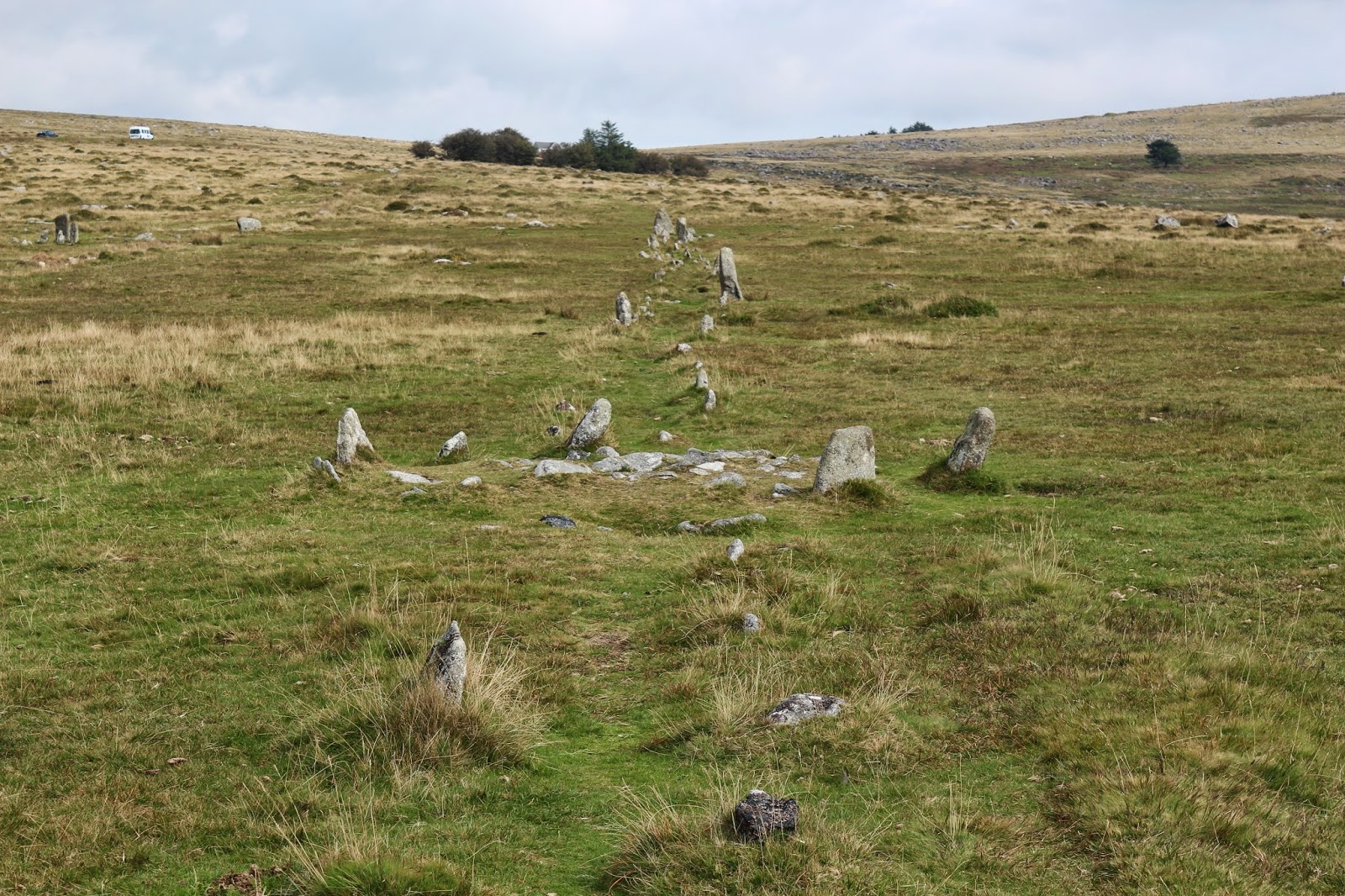Anyway, putting the heartache to one side, what about the walk? At just under 6 miles, one of the shortest ones we've done recently. However this was definitely a case of quality over quantity as it was a route enjoyed by all. The weather was ideal and our track, starting at Merrivale, took us down the Walkham Valley to Criptor and then onto the mineral railway around King Tor and back to our starting point via the stone rows on Longash Common.
 |
| For those who want to know, our route for the day and its elevation profile. |
 |
| The view from our starting point, looking towards the old granite quarry at Merrivale and the three Staple Tors in the background. |
 |
| The first mile or so was along a very old carter's trackway, emerging from the woods into more open land via this evocative gateway. |
 |
| An old oak tree looking as if it's holding back the rocks. |
 |
| Our route took us towards Criptor, coming from Daveytown to the right. |
 |
| We do like a bit of historical enactment and here we are reconstructing a Bronze Age burial. Oh, how empty the house seems without my IWC. |








No comments:
Post a Comment